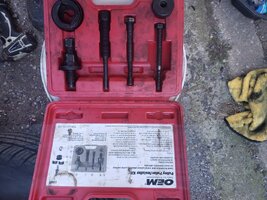- Nov 21, 2011
- 433
Chances are you're here because your rig just got a whole lot harder to steer, or maybe there's a godawful squealing noise from under the hood when you try to turn your wheel.
Our PS pumps generally fail for two reasons:
The pic of shame, 3 wheel drive and no power steering, needed 3 people pushing the front end to turn around.

Back to the point. However you lost your pump, you'll want to replace it. Fortunately it's not hard to do!
Things you will want:
Remove the serpentine belt. It can be loosened by inserting the square end of a 3/8 drive ratchet into the tensioner and rotating clockwise. If you have a turkey baster, remove the PS pump cap and suck all of the fluid out of the reservoir. Replace the cap when done.
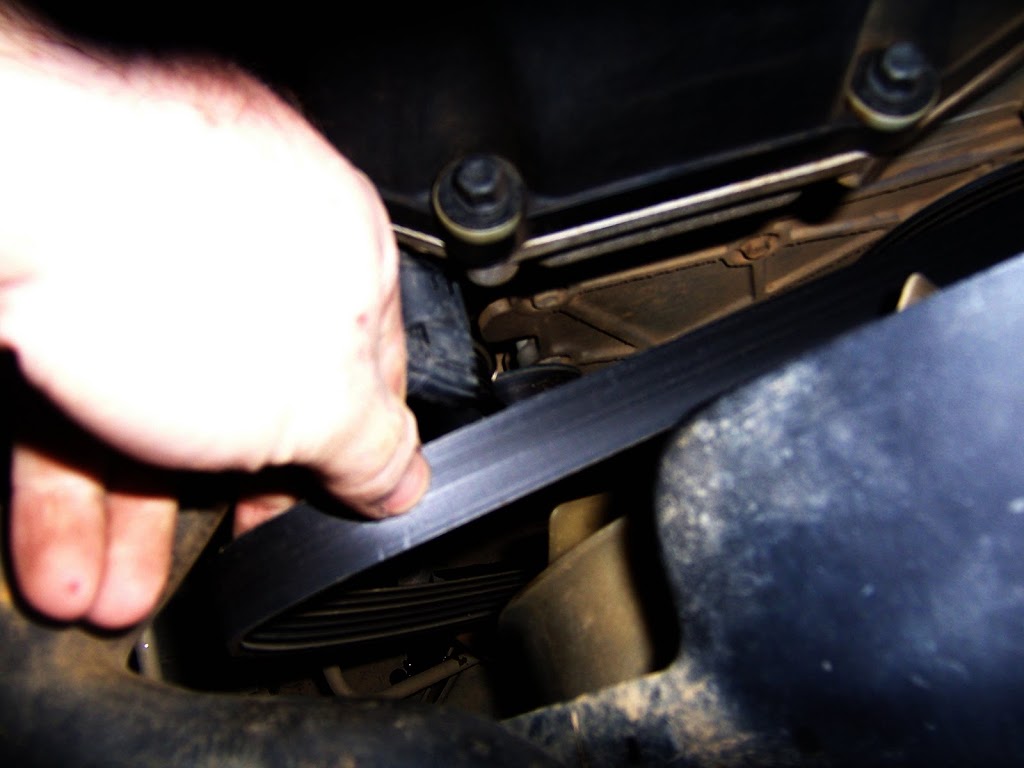
If your shaft is broken, you'll be able to pull your pulley out of the pump. You'll get fluid behind it, so be ready with rags.


Remove the three bolts holding the pump to the bracket. If your pulley is still attached, you can reach these by inserting your deep socket through the holes in the pulley.
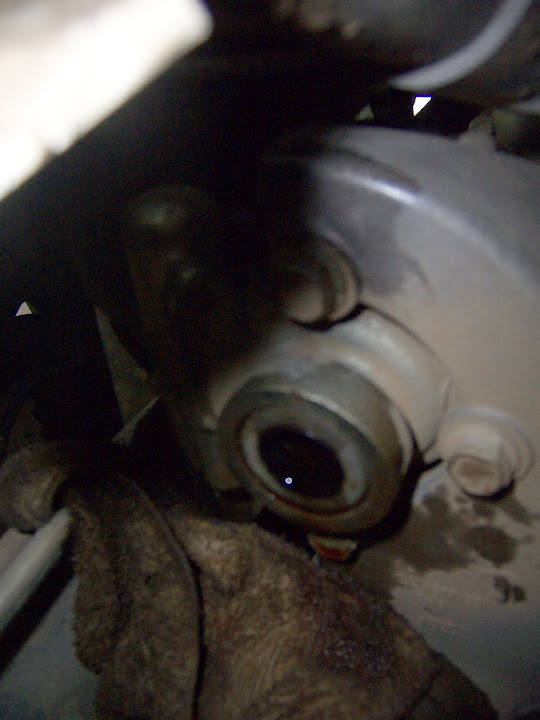
Next you will disconnect the high pressure line, shown in the center of this picture. This is most easily accomplished through the passenger side wheel well. If you have removed your wheel well liners this will be easier. If you have a body lift you'll feel like you're cheating. It simply unscrews. Expect more fluid.
It simply unscrews. Expect more fluid.

Once the high pressure line is disconnected, you can rotate the power steering pump a little and get to the return line, which is held on by a clamp. Also open the wire retainer and remove the wire loom from it. More fluid incoming!
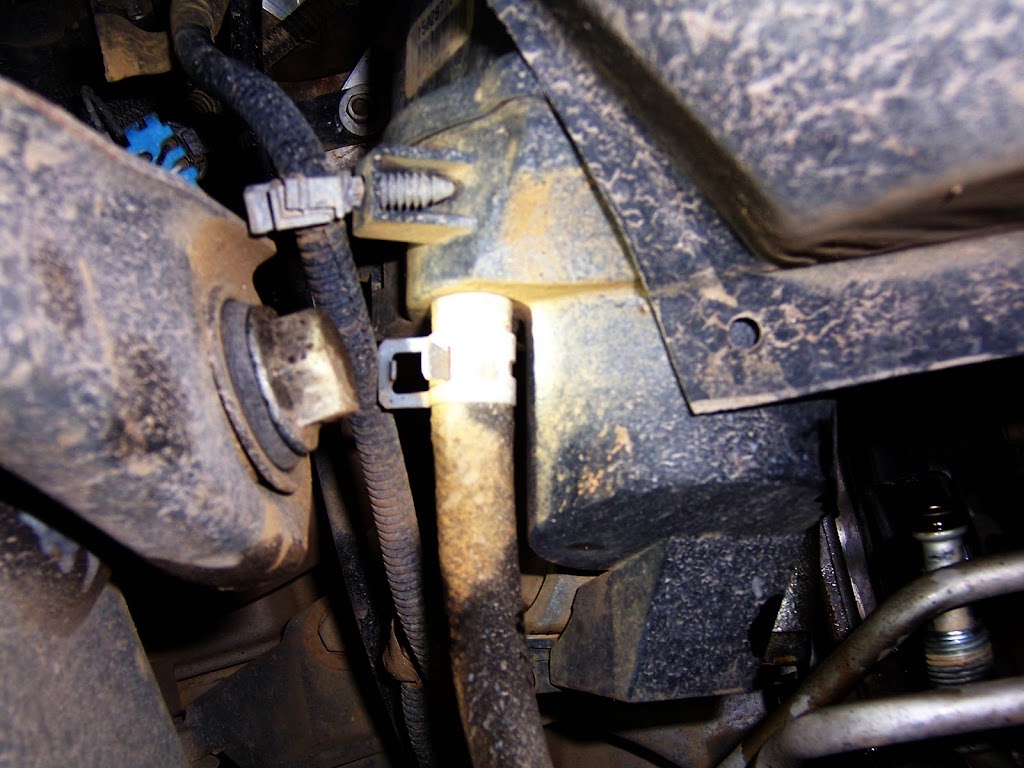
Return to the engine bay and pull the pump out from the top. You may need a twist it around a little but try to keep it right side up. Once it's out, remove the cap and invert it into your bucket.
Now you need to remove the pulley and the reservoir.
Assemble the puller on the pulley as shown. Apply an impact gun to the puller if you have one. If you don't, wrap the jaws of a vice in rags and clamp the pulley into it, then use a large ratchet and socket to turn the screw on the puller.
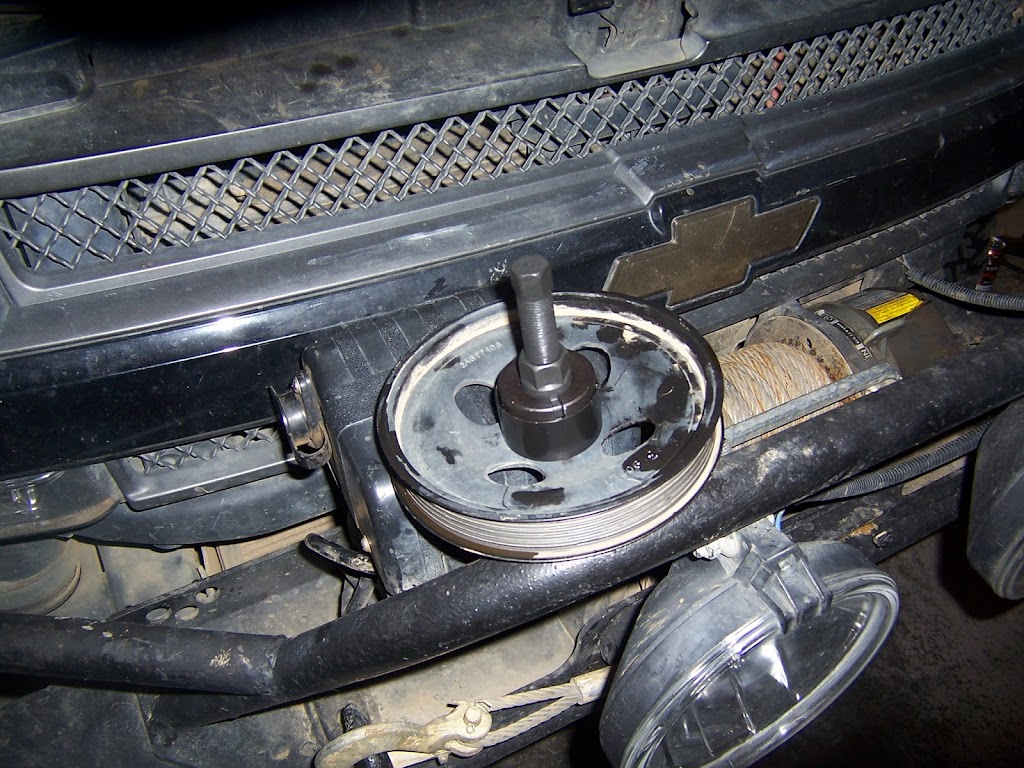

Once the pulley is off the old shaft, place it on the new shaft as shown. Use a hammer to firmly (but carefully) tap the pulley onto the shaft of the new pump.
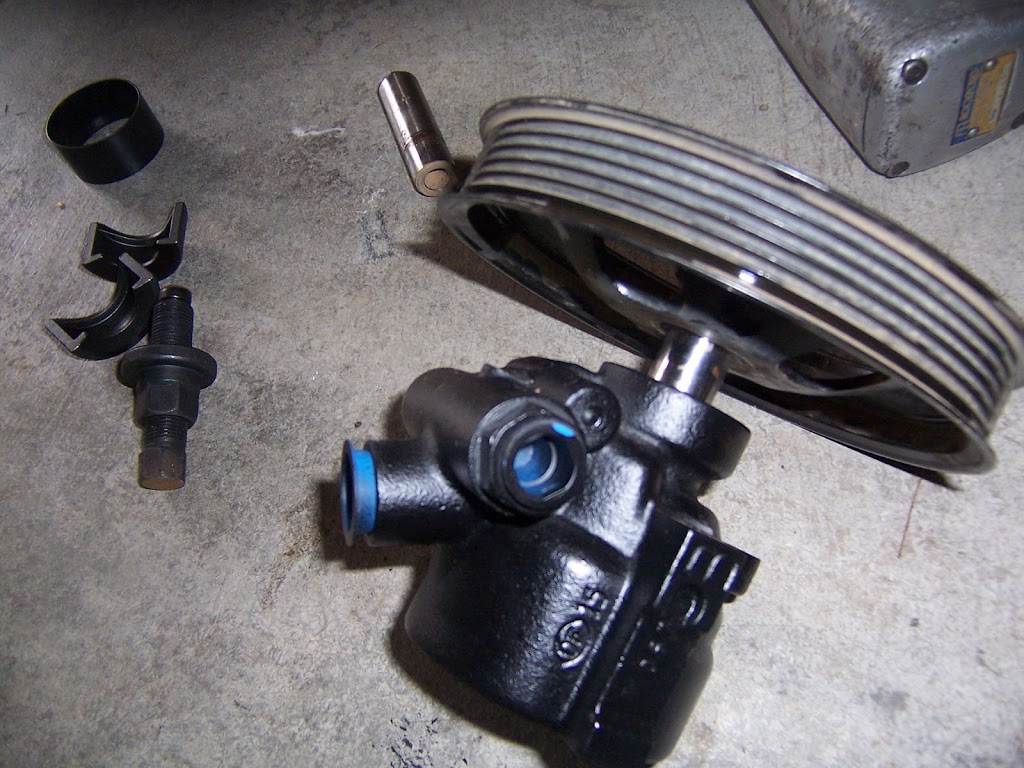
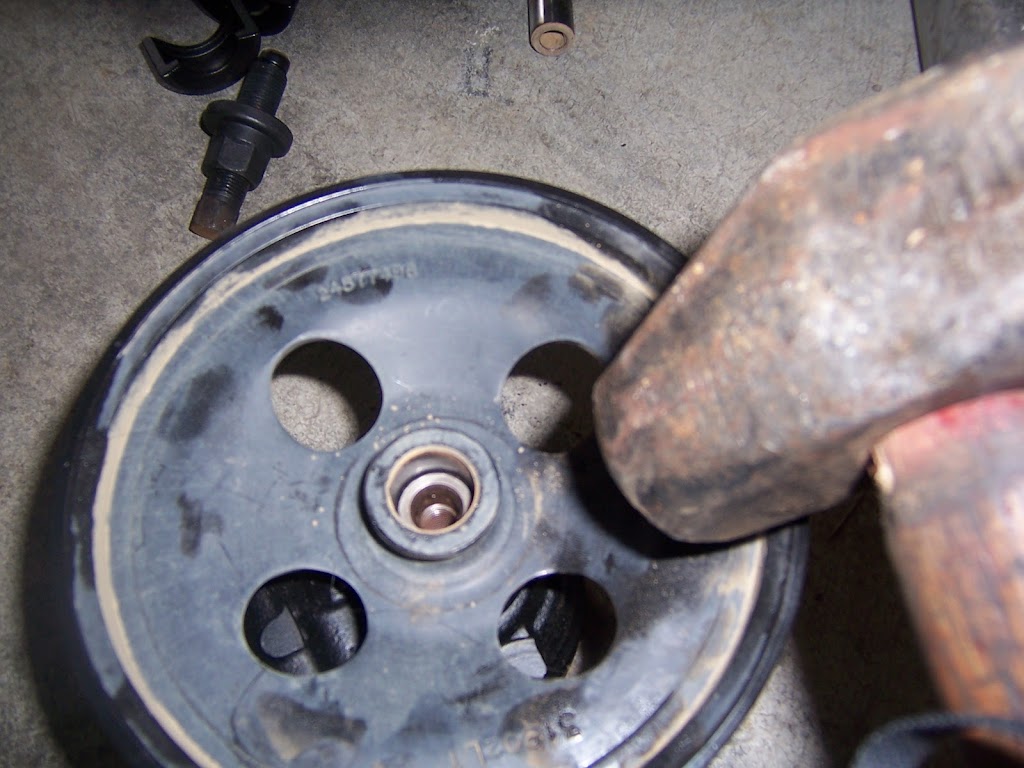
Now you'll need to remove the reservoir from the old pump. There are two clips holding the reservoir on. In the middle of those clips are small tabs that you must bend up with a screwdriver. After they are bent up, you can tap them off of the old pump. (a couple of these pics didn't turn out, my apologies)

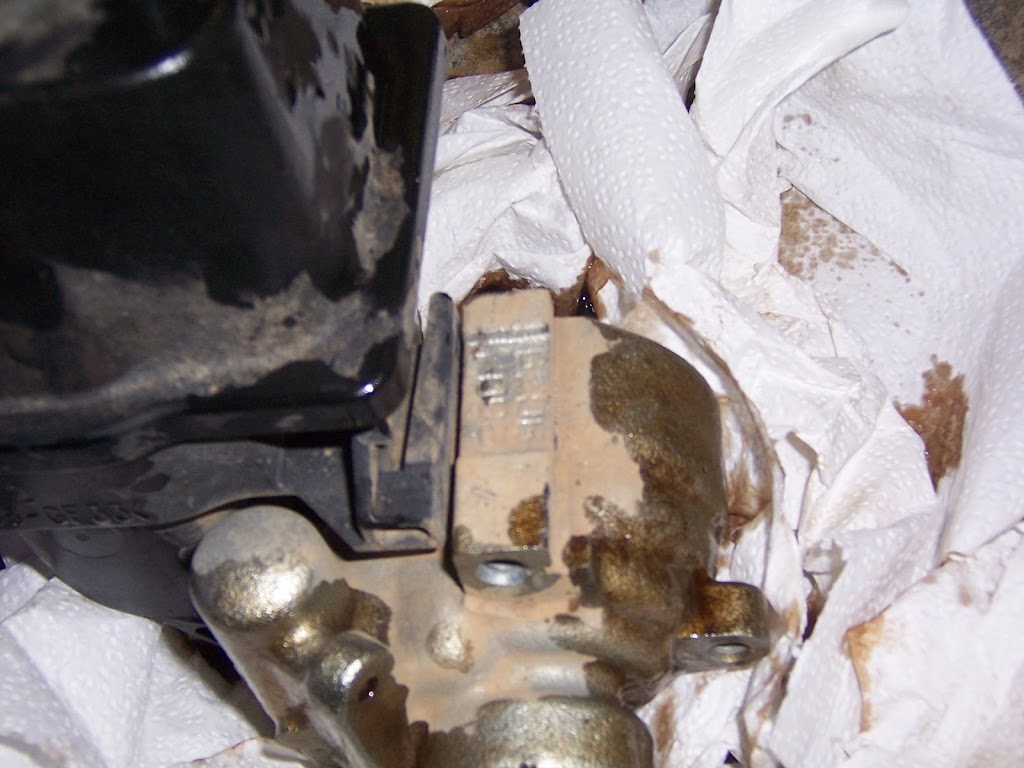
After the clips have been removed, the reservoir simply pulls off the old pump.
There is a small plastic tube with an o-ring in it which will be left in the old pump. Pull it out and replace the o-ring with one that comes with your new pump. Push that tube into the new pump.
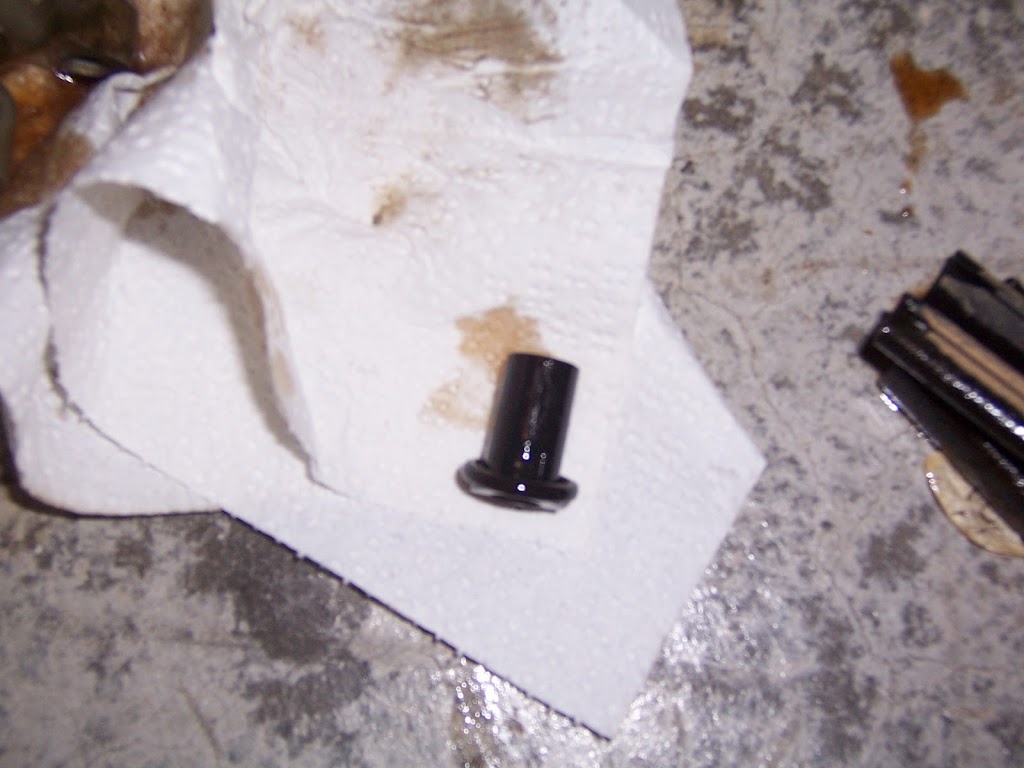
Push the reservoir onto the new pump and tap the clips on to keep it in place.
Installation is the reverse of removal. You can optionally replace the silly clamp GM uses with a screw type hose clamp. The hardest parts will be lining up the bolts through the pulley (not too bad) and getting the serpentine belt back on (which takes about 6 hands).
Once you're reassembled, open your quart of PS fluid and fill the reservoir to about 1/2" from the top. Start the truck and let it idle WITHOUT touching the steering wheel for about a minute. Keep an eye on the level of the reservoir and add fluid as needed. You may hear some noise from the new pump as it works the air out of the system. Once a minute or so has passed, turn the wheel from lock to lock several times.
If all is quiet and the steering wheel turns easily you're home free!
If this post was helpful, please hit the "Like" button and also rate the thread. Thanks!
Our PS pumps generally fail for two reasons:
- Simple age/wear (generally due to not changing the fluid)
- The pump shaft breaking, caused by high RPMs and cranking the steering wheel to lock. Doing doughnuts in your truck is a very easy way to end up with a dead PS pump.
The pic of shame, 3 wheel drive and no power steering, needed 3 people pushing the front end to turn around.

Back to the point. However you lost your pump, you'll want to replace it. Fortunately it's not hard to do!
Things you will want:
- a QUART of power steering fluid (the little bottles won't be enough)
- a 13mm deep socket/ratchet (3/8 drive)
- a PS pump pulley puller (rent one from a parts store)
- an impact gun and sockets, or a vise and large ratchet/sockets (for using the puller)
- a hammer
- 16mm wrench or adjustable wrench
- a pair of needle nose pliers
- a flathead screwdriver
- a bucket or a large turkey baster (to remove old fluid)
- a lot of rags
- a small screw type hose clamp (optional)
- you will most likely need a jack and lugnut wrench to remove your passenger front tire if you aren't lifted
Remove the serpentine belt. It can be loosened by inserting the square end of a 3/8 drive ratchet into the tensioner and rotating clockwise. If you have a turkey baster, remove the PS pump cap and suck all of the fluid out of the reservoir. Replace the cap when done.
If your shaft is broken, you'll be able to pull your pulley out of the pump. You'll get fluid behind it, so be ready with rags.
Remove the three bolts holding the pump to the bracket. If your pulley is still attached, you can reach these by inserting your deep socket through the holes in the pulley.
Next you will disconnect the high pressure line, shown in the center of this picture. This is most easily accomplished through the passenger side wheel well. If you have removed your wheel well liners this will be easier. If you have a body lift you'll feel like you're cheating.
 It simply unscrews. Expect more fluid.
It simply unscrews. Expect more fluid.Once the high pressure line is disconnected, you can rotate the power steering pump a little and get to the return line, which is held on by a clamp. Also open the wire retainer and remove the wire loom from it. More fluid incoming!
Return to the engine bay and pull the pump out from the top. You may need a twist it around a little but try to keep it right side up. Once it's out, remove the cap and invert it into your bucket.
Now you need to remove the pulley and the reservoir.
Assemble the puller on the pulley as shown. Apply an impact gun to the puller if you have one. If you don't, wrap the jaws of a vice in rags and clamp the pulley into it, then use a large ratchet and socket to turn the screw on the puller.
Once the pulley is off the old shaft, place it on the new shaft as shown. Use a hammer to firmly (but carefully) tap the pulley onto the shaft of the new pump.
Now you'll need to remove the reservoir from the old pump. There are two clips holding the reservoir on. In the middle of those clips are small tabs that you must bend up with a screwdriver. After they are bent up, you can tap them off of the old pump. (a couple of these pics didn't turn out, my apologies)
After the clips have been removed, the reservoir simply pulls off the old pump.
There is a small plastic tube with an o-ring in it which will be left in the old pump. Pull it out and replace the o-ring with one that comes with your new pump. Push that tube into the new pump.
Push the reservoir onto the new pump and tap the clips on to keep it in place.
Installation is the reverse of removal. You can optionally replace the silly clamp GM uses with a screw type hose clamp. The hardest parts will be lining up the bolts through the pulley (not too bad) and getting the serpentine belt back on (which takes about 6 hands).
Once you're reassembled, open your quart of PS fluid and fill the reservoir to about 1/2" from the top. Start the truck and let it idle WITHOUT touching the steering wheel for about a minute. Keep an eye on the level of the reservoir and add fluid as needed. You may hear some noise from the new pump as it works the air out of the system. Once a minute or so has passed, turn the wheel from lock to lock several times.
If all is quiet and the steering wheel turns easily you're home free!
If this post was helpful, please hit the "Like" button and also rate the thread. Thanks!




